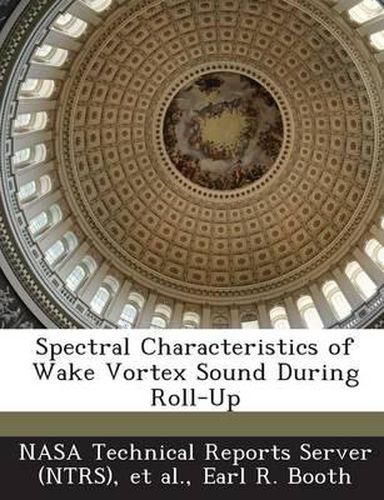Readings Newsletter
Become a Readings Member to make your shopping experience even easier.
Sign in or sign up for free!
You’re not far away from qualifying for FREE standard shipping within Australia
You’ve qualified for FREE standard shipping within Australia
The cart is loading…






This report presents an analysis of the sound spectra generated by a trailing aircraft vortex during its rolling-up process. The study demonstrates that a rolling-up vortex could produce low frequency (less than 100 Hz) sound with very high intensity (60 dB above threshold of human hearing) at a distance of 200 ft from the vortex core. The spectrum then drops o rapidly thereafter. A rigorous analytical approach has been adopted in this report to derive the spectrum of vortex sound. First, the sound pressure was solved from an alternative treatment of the Lighthill s acoustic analogy approach [1]. After the application of Green s function for free space, a tensor analysis was applied to permit the removal of the source term singularity of the wave equation in the far field. Consequently, the sound pressure is expressed in terms of the retarded time that indicates the time history and spacial distribution of the sound source. The Fourier transformation is then applied to the sound pressure to compute its spectrum. As a result, the Fourier transformation greatly simplifies the expression of the vortex sound pressure involving the retarded time, so that the numerical computation is applicable with ease for axisymmetric line vortices during the rolling-up process. The vortex model assumes that the vortex circulation is proportional to the time and the core radius is a constant. In addition, the velocity profile is assumed to be self-similar along the aircraft flight path, so that a benchmark vortex velocity profile can be devised to obtain a closed form solution, which is then used to validate the numerical calculations for other more realistic vortex profiles for which no closed form solutions are available. The study suggests that acoustic sensors operating at low frequency band could be profitably deployed for detecting the vortex sound during the rolling-up process.
$9.00 standard shipping within Australia
FREE standard shipping within Australia for orders over $100.00
Express & International shipping calculated at checkout
This report presents an analysis of the sound spectra generated by a trailing aircraft vortex during its rolling-up process. The study demonstrates that a rolling-up vortex could produce low frequency (less than 100 Hz) sound with very high intensity (60 dB above threshold of human hearing) at a distance of 200 ft from the vortex core. The spectrum then drops o rapidly thereafter. A rigorous analytical approach has been adopted in this report to derive the spectrum of vortex sound. First, the sound pressure was solved from an alternative treatment of the Lighthill s acoustic analogy approach [1]. After the application of Green s function for free space, a tensor analysis was applied to permit the removal of the source term singularity of the wave equation in the far field. Consequently, the sound pressure is expressed in terms of the retarded time that indicates the time history and spacial distribution of the sound source. The Fourier transformation is then applied to the sound pressure to compute its spectrum. As a result, the Fourier transformation greatly simplifies the expression of the vortex sound pressure involving the retarded time, so that the numerical computation is applicable with ease for axisymmetric line vortices during the rolling-up process. The vortex model assumes that the vortex circulation is proportional to the time and the core radius is a constant. In addition, the velocity profile is assumed to be self-similar along the aircraft flight path, so that a benchmark vortex velocity profile can be devised to obtain a closed form solution, which is then used to validate the numerical calculations for other more realistic vortex profiles for which no closed form solutions are available. The study suggests that acoustic sensors operating at low frequency band could be profitably deployed for detecting the vortex sound during the rolling-up process.